#University of Chicago Law School
Explore tagged Tumblr posts
Text
Study Explains Why Laws Are Written In An Incomprehensible Style
— By Massachusetts Institute of Technology (MIT) | 19 August 2024

Credit: Unsplash/CC0 Public Domain
Legal documents are notoriously difficult to understand, even for lawyers. This raises the question: Why are these documents written in a style that makes them so impenetrable?
MIT cognitive scientists believe they have uncovered the answer to that question. Just as "magic spells" use special rhymes and archaic terms to signal their power, the convoluted language of legalese acts to convey a sense of authority, they conclude.
In a study appearing in the Proceedings of the National Academy of Sciences, the researchers found that even non-lawyers use this type of language when asked to write laws.
"People seem to understand that there's an implicit rule that this is how laws should sound, and they write them that way," says Edward Gibson, an MIT Professor of Brain and Cognitive Sciences and the Senior Author of the Study.
Eric Martinez Ph.D. is the lead author of the study. Francis Mollica, a lecturer at the University of Melbourne, is also an author of the paper.
Casting a Legal Spell
Gibson's research group has been studying the unique characteristics of legalese since 2020, when Martinez came to MIT (Massachusetts Institute of Technology) after earning a law degree from Harvard Law School. In a 2022 study, Gibson, Martinez, and Mollica analyzed legal contracts totaling about 3.5 million words, comparing them with other types of writing, including movie scripts, newspaper articles, and academic papers.
That analysis revealed that legal documents frequently have long definitions inserted in the middle of sentences—a feature known as "center-embedding." Linguists have previously found that this kind of structure can make text much more difficult to understand.
"Legalese somehow has developed this tendency to put structures inside other structures, in a way which is not typical of human languages," Gibson says.
In a follow-up study published in 2023, the researchers found that legalese also makes documents more difficult for lawyers to understand. Lawyers tended to prefer plain English versions of documents, and they rated those versions to be just as enforceable as traditional legal documents.
"Lawyers also find legalese to be unwieldy and complicated," Gibson says. "Lawyers don't like it, laypeople don't like it, so the point of this current paper was to try and figure out why they write documents this way."
The researchers had a couple of hypotheses for why legalese is so prevalent. One was the "copy and edit hypothesis," which suggests that legal documents begin with a simple premise, and then additional information and definitions are inserted into already existing sentences, creating complex center-embedded clauses.
"We thought it was plausible that what happens is you start with an initial draft that's simple, and then later you think of all these other conditions that you want to include. And the idea is that once you've started, it's much easier to center-embed that into the existing provision," says Martinez, who is now a Fellow and Instructor at the University of Chicago Law School.
However, the findings ended up pointing toward a different hypothesis, the so-called "Magic Spell Hypothesis." Just as magic spells are written with a distinctive style that sets them apart from everyday language, the convoluted style of legal language appears to signal a special kind of authority, the researchers say.
"In English culture, if you want to write something that's a magic spell, people know that the way to do that is you put a lot of old-fashioned rhymes in there. We think maybe center-embedding is signaling legalese in the same way," Gibson says.
In this study, the researchers asked about 200 non-lawyers (Native Speakers of English Living in the United States, Who Were Recruited Through a Crowdsourcing Site Called Prolific), to write two types of texts. In the first task, people were told to write laws prohibiting crimes such as drunk driving, burglary, arson, and drug trafficking. In the second task, they were asked to write stories about those crimes.
To test the copy and edit hypothesis, half of the participants were asked to add additional information after they wrote their initial law or story.
The researchers found that all of the subjects wrote laws with center-embedded clauses, regardless of whether they wrote the law all at once or were told to write a draft and then add to it later. And, when they wrote stories related to those laws, they wrote in much plainer English, regardless of whether they had to add information later.
"When writing laws, they did a lot of center-embedding regardless of whether or not they had to edit it or write it from scratch. And in that narrative text, they did not use center-embedding in either case," Martinez says.
In another set of experiments, about 80 participants were asked to write laws, as well as descriptions that would explain those laws to visitors from another country. In these experiments, participants again used center-embedding for their laws, but not for the descriptions of those laws.
The Origins of Legalese
Gibson's lab is now investigating the origins of center-embedding in legal documents. Early American laws were based on British law, so the researchers plan to analyze British laws to see if they feature the same kind of grammatical construction. And going back much further, they plan to analyze whether Center-Embedding is found in the Hammurabi Code, the earliest known set of laws, which dates to around 1750 BC.
"There may be just a stylistic way of writing from back then, and if it was seen as successful, people would use that style in other languages," Gibson says. "I would guess that it's an accidental property of how the laws were written the first time, but we don't know that yet."
The researchers hope that their work, which has identified specific aspects of legal language that make it more difficult to understand, will motivate lawmakers to try to make laws more comprehensible.
Efforts to write legal documents in plainer language date to at least the 1970s, when President Richard Nixon declared that federal regulations should be written in "Layman's Terms." However, legal language has changed very little since that time.
"We have learned only very recently what it is that makes legal language so complicated, and therefore I am optimistic about being able to change it," Gibson says.
#Written Laws#Incomprehensible Style#Study | Explains#Massachusetts Institute of Technology (MIT)#Proceedings of the National Academy of Sciences#Eric Martinez Ph.D. | Francis Mollica#University of Chicago Law School#Magic Spell Hypothesis#Casting | Legal Spell#The Origins of Legalese#President Richard Nixon#Layman's Terms#Center-Embedding | Hammurabi Code
1 note
·
View note
Text



luna • lux et lex
updated september 22, 2024
hey studyblr, i’m luna. with september starting, i thought now is as good a time as any to set up my blog for studyblr posting. it’s nice to meet you and i look forward to working hard together.
about me:
luna: twenty-six years old (november 11), based in canada
law student: third year, business law focus with particular interest in corporate, entertainment, and multi-residential housing
languages: arabic (intermediate), japanese (intermediate), latin (beginner), french (beginner)
about this blog:
mostly runs on a queue that posts five times a day
studyblr: periodic updates, thoughts and reflections on what i’m learning, and possibly some study challenges
topics: ancient civilizations, art, architecture, books, philosophy, photography, social justice
looking for more blogs to follow: active studyblr blogs (especially law students), original photographers (especially academia aesthetics, architecture, art, and café), non-fiction readers who post about their reading (especially ancient civilizations, ethics, law, and philosophy) - if this is you, please like or reply to this post and i’ll check out your blog
first: vincent van gogh. second: amy friend. third: unknown (ancient art from japan). photos are mine.
#lex scripta#studyblr introduction#studyblr intro post#studyblr#study blog#new studyblr#new study blog#blog intro#law#law student#law school#law studyblr#university studyblr#university#studyblr community#university life#university student#museum photography#museum aesthetic#art museum#art institute of chicago#original phography#van gogh#ancient japan#local artist#lawblr
20 notes
·
View notes
Text
WOMEN IN IP: OPPORTUNITIES & CHALLENGES.
Join us as we celebrate World IP Day and women in IP! We will discuss the opportunities and challenges of women working in the field of intellectual property law. Our Moderator: Esther Lim, Partner & Chief Diversity and Inclusion Officer, Finnegan, Henderson, Farabow, Garrett & Dunner, LLP Our panelists: Fraline Allgaier, JD, MS, Patent Attorney and Owner of Allgaier Patent Solutions Ayala Deutsch, Executive Vice President and Deputy General Counsel of NBA Properties Lisa Dunner, Managing Partner, Dunner Law Sanjana Mangalagiri, Head of Legal for Avail, Lead International Counsel at Allstate Michelle Wahl, Partner, Swanson, Martin & Bell, LLP Tickets and Discounts Registrants enjoy priority access to event videos. This is a free event!
Organizer: University of Illinois Chicago School of Law.

#University of Illinois Chicago School of Law#WorldIPday#26april#women in IP#intellectual property law#United States#panel discussion
0 notes
Text
i just found something incredible today while browsing retractionwatch. you know that study that liberals tout regarding 'legalising prostitution decreased rape, and criminalising it increases rape'? well-
After reading an economics paper that claimed to document an increase in the rate of rape in European countries following the passage of prostitution bans, a data scientist had questions.
The scientist, who wishes to remain anonymous, sent a detailed email to an editor of the Journal of Law and Economics, which had published the paper last November, outlining concerns about the data and methods the authors used.
Among them: the historical rates of rape recorded in the paper did not match the values in the official sources the authors said they used. In other cases, data that were available from the official sources were missing in the paper, the researchers didn’t incorporate all the data they had collected into their model, and a variable was coded inconsistently, the data scientist wrote. (We’ve made the full critique available here.)
Given the consequences the conclusions of the article could have for people in the sex industry, the data scientist wrote, “I hope that someone takes this very seriously and looks into it the [sic] validity of the analysis and the data they used.”
In response, Sam Peltzman, an editor of the journal and a professor emeritus of economics at the University of Chicago’s Booth School of Business, instructed the data scientist to contact the authors of the article:
The email raises serious questions but without any specific request. Your questions can better be answered by the authors than editors who, as you must know, cannot give each submission the kind of careful attention reflected in your email. Accordingly, we ask that you contact the authors directly if you have not already done so. If you mean the email as a prologue to a critique, I am happy to discuss our relevant policies or any other question about our editorial process.
The data scientist wrote back with a specific request:
I have just informed you, the editor, that it appears that the authors made an error in at least one of their models that resulted in a substantive difference in the conclusions of the article you edited … I am requesting you investigate if these models are correct and if so, at very least issue a correction. [emphasis original]
In response, Peltzman reiterated his refusal to investigate:
I can only repeat what was in my last letter. You should take this up with the authors first. The editors cannot become involved unless your conversation with the authors fails to resolve the issues and a comment is received through the usual submission process.
The University of Chicago Press, which publishes the Journal of Law and Economics, states on its publication ethics page that
When notified of possible errors or corrections, the editor(s) of the journal will review and resolve them in consultation with the Press and according to the Press’s best practices.
We asked Peltzman why he refused to investigate the concerns the data scientist had raised. He told us:
The JLE does not have the resources to investigate concerns about data procedure used by authors. We select referees knowledgeable about the topic of any submission. Occasionally a referee might comment on some detail of data used by authors. more often the referee and editors have to take data details at face value and focus their efforts on evaluating empirical results and analysis. While I can only speak for the JLE it is my impression that these procedures are common among economics journals that publish empirical articles.
Peltzman also explained that the journal’s standard procedure for considering critiques of published articles, “designed to avoid misunderstanding and excessive burden on editors’ and referees’ time,” starts with the critic contacting the authors directly.
If the authors don’t respond, or if their response is unsatisfactory, the critic could then submit a comment to the journal along with their correspondence with the authors, which the editors would handle as any other submission.
“Editors obviously cannot be expected to look at raw data for every paper they review,” the data scientist acknowledged, “but when concerns are brought directly to them it is their responsibility to take them seriously. If readers can’t trust that editors will address serious concerns appropriately, it will undermine their faith in the scientific process.”
We contacted the authors of the paper, Huasheng Gao and Vanya Stefanova Petrova of Fudan University’s Fanhai International School of Finance in Shanghai, and shared the data scientist’s critique. They responded with an 11-page PDF, available here, standing by their work.
About the differences between the data and their paper and the official sources, they said:
the data we have used in the paper were the most up-to-date data available at the time we started the empirical work in 2018 … Eurostat is constantly revising its data. It is possible that the data contained in its current version are different from the historical version
The data scientist was unimpressed, and noted that the authors had not responded to a key aspect of the critique:
Even if the authors believe it was a reasonable strategy to only assess two years post policy change, the relative year variable for year 2— the year in which they identified a large causal increase in rape in the criminalized prostitution countries and a reduction in the prostitution decriminalized countries — was coded incorrectly (or differently for some reason). When the coding is consistent with their original coding scheme, a reduction in rape is seen in the criminalized prostitution group. I’m not sure why they didn’t address this in their response.
The authors also did not directly respond to the data scientist’s concern that if they had incorporated every year of data they had on rape rates into their model, instead of only the two years following a change in prostitution laws, they would not have gotten the same results, the scientist said.
To check whether data values had indeed changed since the authors started their work, the scientist went to the website of the University of Michigan’s Institute for Social Research, where the survey data the authors used is available for download, and found that no substantive changes had been made.
The scientist told us:
If they did something wrong or made a mistake they should just take accountability and retract the article.
let me simplify and repeat the core of this to you:
the scientists not only missed out data points, but if the scope of the study changes from the first two years post law change (whether criminalisation or decriminalisation) to all years of rape records before and after we have, THE RESULTS REVERSE AND THE CRIMINALISED SIDE HAS DECREASED RATE OF RAPE COMPARED TO SWITCHING TO DECRIMINALISED.
not to mention the fallacious belief that being forced to have sex or starve/be homeless, with an abusive pimp taking most of your money, is somehow not rape.
this whole study is near worthless. the only worth is having access to the data points they used, so we can see actual results.
462 notes
·
View notes
Text

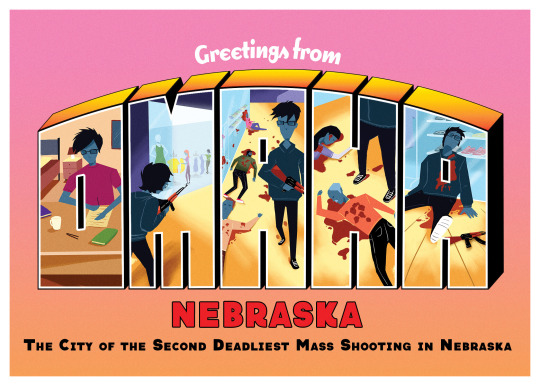

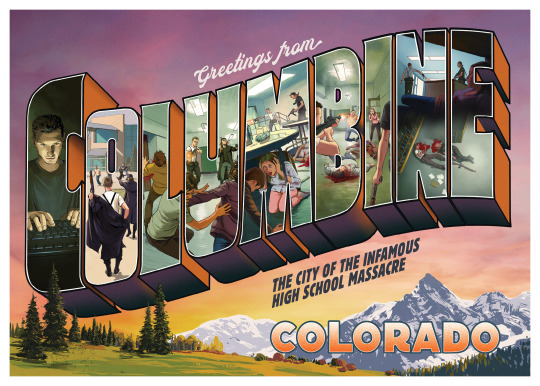





vimeo
“Because the US government was not acting on mass shootings, we directly attacked a trait Americans are most known for: their pride in their country. Change the Ref created the Shamecards, a postcard collection designed to demand gun law reform from Congress. Subverting the traditional greeting cards that depict each city’s landmarks, ours show what cities are becoming known for.”
shamecards.org
There is 54 cards total representing:
Annapolis — Maryland: Capital Gazette Shooting
Atlanta — Georgia: Day Trading Firm Shootings
Benton — Kentucky: Marshall County High School Shooting
Bethel — Alaska: Regional High School Shooting
Binghamton — New York: Binghamton Shooting
Blacksburg — Virginia: Virginia Tech Massacre
Camden – New Jersey: Walk of Death Massacre
Charleston — South Carolina: Charleston Church Shooting
Charlotte — North Carolina: 2019 University Shooting
Cheyenne — Wyoming: Senior Home Shooting
Chicago — Illinois: Medical Center Shooting
Clovis — New Mexico: Clovis Library Shooting
Columbine — Colorado: Columbine
Dayton — Ohio: Dayton Shooting
Edmond — Oklahoma: Post Office Shooting
El Paso — Texas: El Paso Shooting
Ennis — Montana: Madison County Shooting
Essex Junction — Vermont: Essex Elementary School Shooting
Geneva — Alabama: Geneva County Massacre.
Grand Forks — North Dakota: Grand Forks Shooting
Hesston — Kansas: Hesston Shooting
Honolulu — Hawaii: First Hawaiian Mass Shooting
Huntington — West Virginia: New Year's Eve Shooting
Indianapolis — Indiana: Hamilton Avenue Murders
Iowa City — Iowa: University Shooting
Jonesboro — Arkansas: Middle School Massacre
Kalamazoo — Michigan: Kalamazoo Shooting
Lafayette — Louisana: Lafayette Shooting
Las Vegas — Nevada: Las Vegas Strip Shooting
Madison — Maine: Madison Rampage
Meridian — Mississippi: Meridian Company Shooting
Moscow — Idaho: Moscow Rampage
Nashville — Tennessee: Nashville Waffle House shooting
Newtown — Connecticut: Sandy Hook Elementary School Shooting
Omaha — Nebraska: Westroads Mall shooting
Orlando — Florida: Pulse Nightclub Shooting
Parkland — Florida: Parkland School Shooting
Pelham — New Hampshire: Wedding Shooting
Pittsburgh — Pennsylvania: Pittsburgh Synagogue Shooting
Prices Corner — Delaware: Delaware Shooting
Red Lake — Minnesota: Indian Reservation Shooting
Roseburg — Oregon: Umpqua Community Collage Shooting
Salt Lake City — Utah: Salt Lake City Mall Shooting
San Diego — California: San Ysidro Massacre
Santa Fe — Texas: Santa Fe School Shooting
Schofield — Wisconsin: Marathon County Shooting
Seattle — Washington: Capitol Hill Massacre
Sisseton — South Dakota: Sisseton Massacre
St. Louis — Missouri: Power Plant Shooting
Sutherland Springs — Texas: Sutherland Springs Church Shooting
Tucson — Arizona: Tocson Shooting
Wakefield — Massachusetts: Tech Company Massacre
Washington — D.C.: Navy Yard Shooting
Westerly — Rhode Island: Assisted-Living Complex Rampage
50 notes
·
View notes
Text
Webster Hubbell

Physique: Husky Build Height: 6'5"
Webster Lee "Web" Hubbell (born 1949), is a former Arkansas lawyer and politician. He was a lawyer in Pulaski County before serving as Mayor of Little Rock from 1979 until he resigned in 1981. He was appointed by Bill Clinton as chief justice of Arkansas State Supreme Court in 1983. When Clinton became President, Hubbell was appointed as Associate Attorney General from 1993 to 1994.
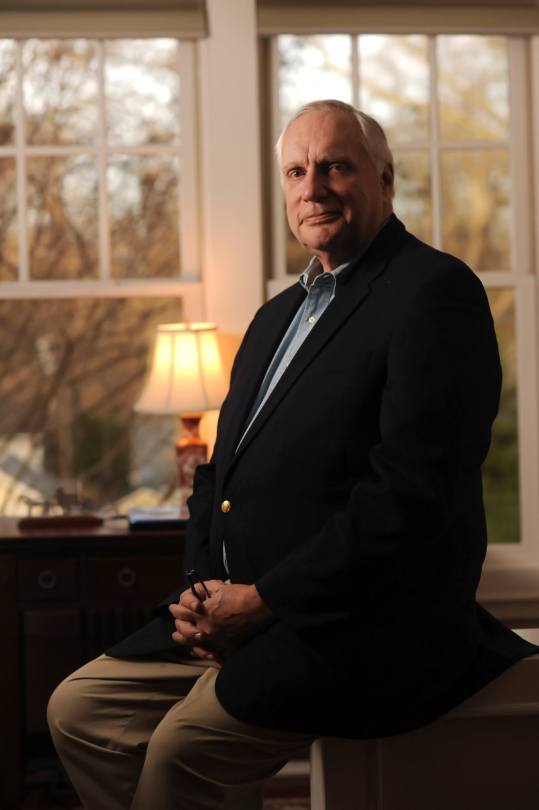



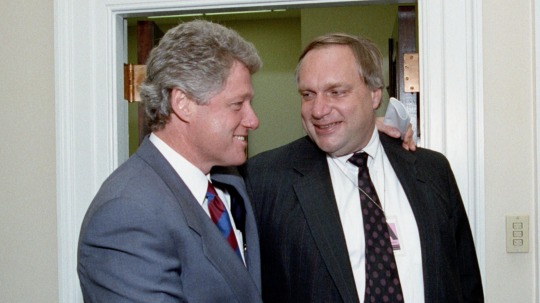
Tall, thick with a pair of DSLs (dick sucking lips) that'll make anyone proud. I'm surprised I wasn't into him more as 'big, dumb looking Hoss" guys are SO my type.

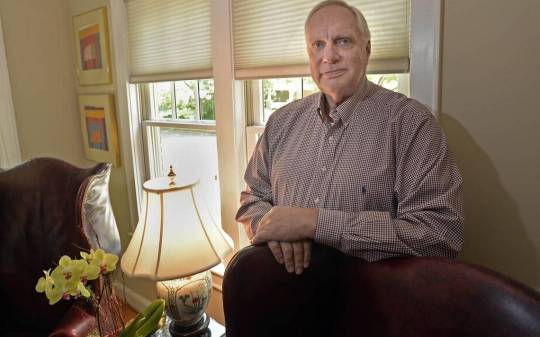
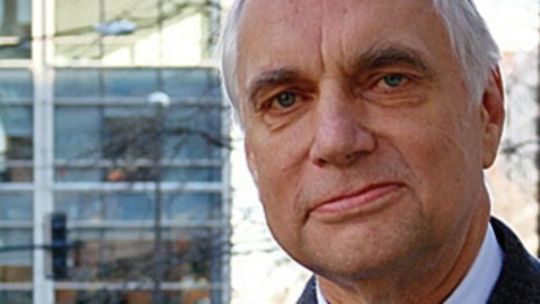
Born and raised in Little Rock, Arkansas, Hubbell attended the University of Arkansas where he played offensive tackle for the Arkansas Razorbacks. Hubbell was selected in the 1969 NFL draft by the Chicago Bears, but an injury ended his football career. He graduated from the University of Arkansas with a degree in Electrical Engineering in 1970, then graduated with a Juris Doctor degree from the University of Arkansas School of Law with honors.
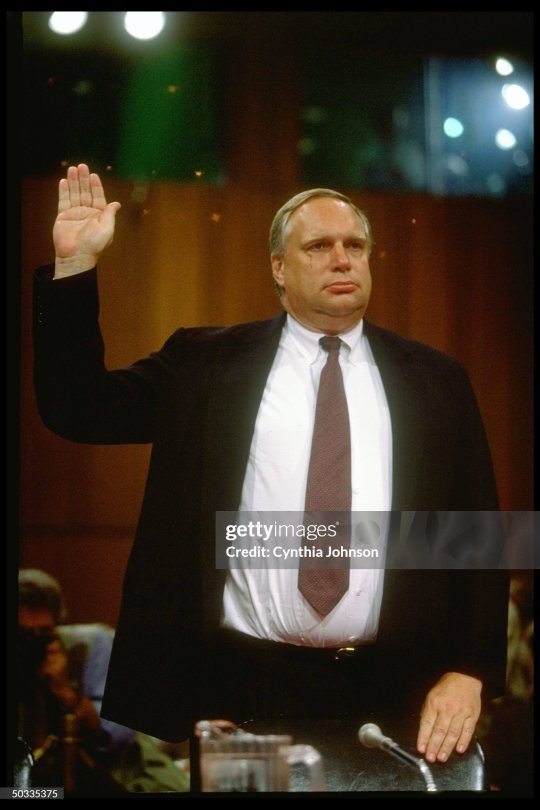

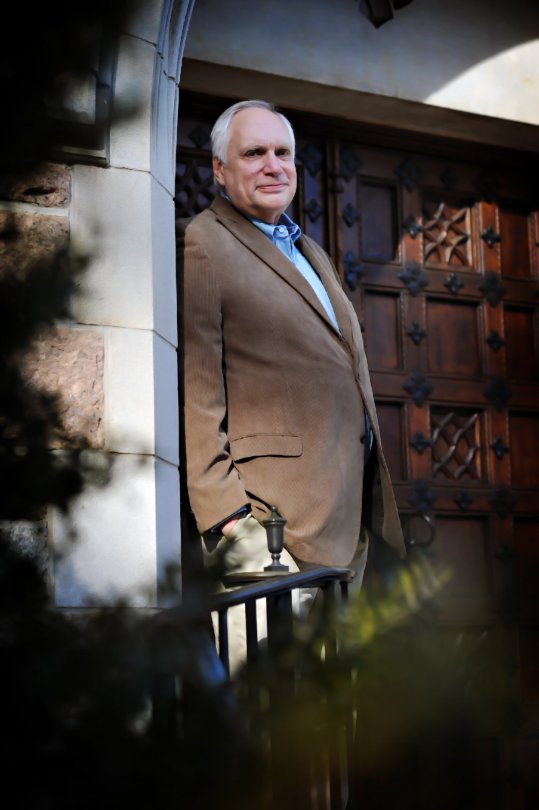
In December 1994, Hubbell pleaded guilty to federal mail fraud and tax evasion charges in connection with his handling of billing at the Rose Law Firm, a firm with partners that once included Hillary Clinton and Vince Foster. Hubbell pled guilty to one count of wire fraud and one count of failing to disclose a conflict of interest, and was sentenced to 21 months in prison.
Afterwards, Hubbell worked as an independent legal consultant, general counsel for an Internet start-up, and general counsel and senior vice-president for a large commercial insurance company until July 2010 where he moved to Charlotte, North Carolina, where he now writes novels.

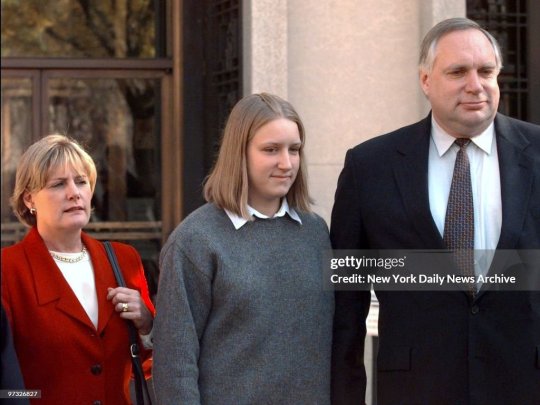


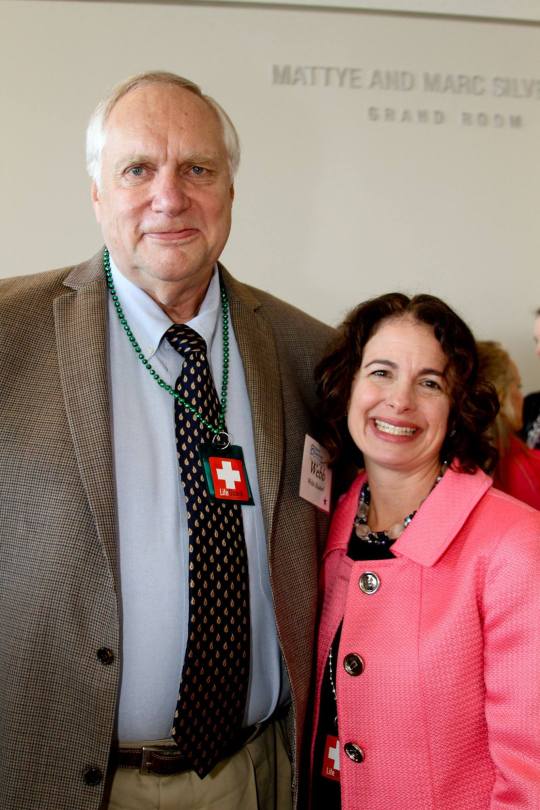
Hubbell and his wife, Suzy, have four children and seven grandchildren. The four children is a plus as it goes to my "loves to fuck" theory. A negative is the rumor he might have fathered Chelsea Clinton. Strangely, it's a plus for Hillary Clinton if she fucked him.
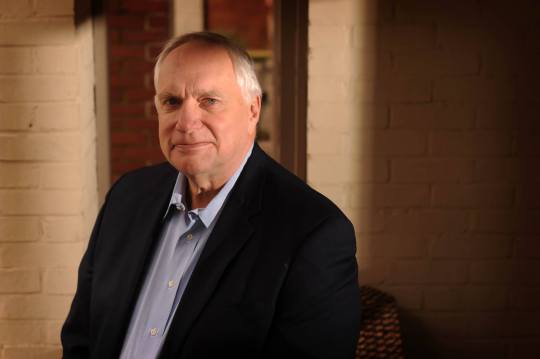
31 notes
·
View notes
Video
youtube
Why We Need to Ban College Legacy Admissions
Children of the super rich are more than twice as likely to get into America’s most elite universities as middle-class students with the exact same test scores. This fast-tracks them to become the next generation of CEOs and lawmakers, and helps keep wealth and power in the hands of people who started out wealthy and powerful.
A big reason rich kids have such an advantage is so-called “legacy admissions” — the preference elite schools give to family members of alumni.
The vast majority of Americans, across the political spectrum, think this is unfair. An astounding 68% of all voters support banning legacy admissions outright. This is the strongest bipartisan agreement I think I’ve ever seen on an issue that boils down to who gets special privileges in America.
Now I went to an Ivy League school (Dartmouth), followed by Oxford, and Yale Law. I wasn’t rich. My father ran a clothing store.
That was a half-century ago — before inequalities of income and wealth exploded in America, before the middle class began shrinking, before the American oligarchy began corrupting American politics with a flood of big money donations. Today, it’s much harder for a middle-class kid to get the same opportunities that I had.
New research conducted at Harvard (ironically) looked at 16 years of admissions data from the Ivy League schools, plus Stanford, Duke, MIT, and the University of Chicago.
The research reveals that one in six students at these prestigious schools comes from the richest 1% of American families.
Why are so many rich kids getting in? It’s not because they’re better students.
Children from the top 1% were 34% more likely to be admitted than middle-class students with the same SAT or ACT scores.
Those from the top ONE TENTH OF ONE PERCENT were more than twice as likely to get in.
Legacy admissions are one of the biggest reasons. Nearly 30% of Harvard’s Class of 2023 were legacies.
It's a vicious cycle that consolidates wealth and power in the hands of a few.
Less than 1% of Americans get into one of these top schools, but their graduates account for 12% of the Fortune 500 CEOs, a quarter of all U.S. senators, and more than a third of all Americans with a net worth over $100 million.
And because these graduates are in the winner's circle, their children have every advantage in the world — even before they get legacy preferences into the same prestigious universities, which in turn hand them even more advantages.
You see how this entrenches an American aristocracy? Concentrated wealth at the top leads to even more and more wealth concentration with each new generation.
It also perpetuates racial discrimination. Since non-white students were barred from most colleges for much of America’s history, legacy students are by definition more likely to be white.
The Ivy League’s legacy policies were introduced during the Jim Crow era, with the specific intent of limiting the number of students of color and Jewish students who could be admitted.
To this day, about 70% of Harvard’s legacy admissions are white, which is why the U.S. Department of Education is now investigating Harvard for potential violation of civil rights.
And with the Supreme Court's ruling against affirmative action, this systemic racism is likely to get worse. The Court is pretending to make college admissions "race-blind," while preserving systems that advance wealthy white students over all others.
It’s time for the government to ban legacy admissions.
224 notes
·
View notes
Text
25 years of 'thoughts and prayers'.
Thurston High School
Columbine High School
Heritage High School
Deming Middle School
Fort Gibson Middle School
Buell Elementary School
Lake Worth Middle School
University of Arkansas
Junipero Serra High School
Santana High School
Bishop Neumann High School
Pacific Lutheran University
Granite Hills High School
Lew Wallace High School
Martin Luther King, Jr High School
Appalachian School of Law
Washington High School
Conception Abbey
Benjamin Tasker Middle School
University of Arizona
Lincoln High School
John McDonogh High School
Red Lion Area Junior High School
Case Western Reserve University
Rocori High School
Ballou High School
Randallstown High School
Bowen High School
Red Lake Senior High School
Harlan Community Academy High School
Campbell County High School
Milwee Middle School
Roseburg High School
Pine Middle School
Essex Elementary School
Duquesne University
Platte Canyon High School
Weston High School
West Nickel Mines School
Joplin Memorial Middle School
Henry Foss High School
Compton Centennial High School
Virginia Tech
Success Tech Academy
Miami Carol City Senior High School
Hamilton High School
Louisiana Technical College
Mitchell High School
EO Green Junior High School
Northern Illinois University
Lakota Middle School
Knoxville Central High School
Willoughby South High School
Henry Ford High School
University of Central Arkansas
Dillard High School
Dunbar High School
Hampton University
Harvard College
Larose-Cut Off Middle School
International Studies Academy
Skyline College
Discovery Middle School
University of Alabama
DeKalb School
Deer Creek Middle School
Ohio State University
Mumford High School
University of Texas
Kelly Elementary School
Marinette High School
Aurora Central High School
Millard South High School
Martinsville West Middle School
Worthing High School
Millard South High School
Highlands Intermediate School
Cape Fear High School
Chardon High School
Episcopal School of Jacksonville
Oikos University
Hamilton High School
Perry Hall School
Normal Community High School
University of South Alabama
Banner Academy South
University of Southern California
Sandy Hook Elementary School
Apostolic Revival Center Christian School
Taft Union High School
Osborn High School
Stevens Institute of Business and Arts
Hazard Community and Technical College
Chicago State University
Lone Star College-North
Cesar Chavez High School
Price Middle School
University of Central Florida
New River Community College
Grambling State University
Massachusetts Institute of Technology
Ossie Ware Mitchell Middle School
Ronald E McNair Discovery Academy
North Panola High School
Carver High School
Agape Christian Academy
Sparks Middle School
North Carolina A&T State University
Stephenson High School
Brashear High School
West Orange High School
Arapahoe High School
Edison High School
Liberty Technology Magnet High School
Hillhouse High School
Berrendo Middle School
Purdue University
South Carolina State University
Los Angeles Valley College
Charles F Brush High School
University of Southern California
Georgia Regents University
Academy of Knowledge Preschool
Benjamin Banneker High School
D H Conley High School
East English Village Preparatory Academy
Paine College
Georgia Gwinnett College
John F Kennedy High School
Seattle Pacific University
Reynolds High School
Indiana State University
Albemarle High School
Fern Creek Traditional High School
Langston Hughes High School
Marysville Pilchuck High School
Florida State University
Miami Carol City High School
Rogers State University
Rosemary Anderson High School
Wisconsin Lutheran High School
Frederick High School
Tenaya Middle School
Bethune-Cookman University
Pershing Elementary School
Wayne Community College
JB Martin Middle School
Southwestern Classical Academy
Savannah State University
Harrisburg High School
Umpqua Community College
Northern Arizona University
Texas Southern University
Tennessee State University
Winston-Salem State University
Mojave High School
Lawrence Central High School
Franklin High School
Muskegon Heights High School
Independence High School
Madison High School
Antigo High School
University of California-Los Angeles
Jeremiah Burke High School
Alpine High School
Townville Elementary School
Vigor High School
Linden McKinley STEM Academy
June Jordan High School for Equity
Union Middle School
Mueller Park Junior High School
West Liberty-Salem High School
University of Washington
King City High School
North Park Elementary School
North Lake College
Freeman High School
Mattoon High School
Rancho Tehama Elementary School
Aztec High School
Wake Forest University
Italy High School
NET Charter High School
Marshall County High School
Sal Castro Middle School
Marjory Stoneman Douglas High School
Great Mills High School
Central Michigan University
Huffman High School
Frederick Douglass High School
Forest High School
Highland High School
Dixon High School
Santa Fe High School
Noblesville West Middle School
University of North Carolina Charlotte
STEM School Highlands Ranch
Edgewood High School
Palm Beach Central High School
Providence Career & Technical Academy
Fairley High School (school bus)
Canyon Springs High School
Dennis Intermediate School
Florida International University
Central Elementary School
Cascade Middle School
Davidson High School
Prairie View A & M University
Altascocita High School
Central Academy of Excellence
Cleveland High School
Robert E Lee High School
Cheyenne South High School
Grambling State University
Blountsville Elementary School
Holmes County, Mississippi (school bus)
Prescott High School
College of the Mainland
Wynbrooke Elementary School
UNC Charlotte
Riverview Florida (school bus)
Second Chance High School
Carman-Ainsworth High School
Williwaw Elementary School
Monroe Clark Middle School
Central Catholic High School
Jeanette High School
Eastern Hills High School
DeAnza High School
Ridgway High School
Reginald F Lewis High School
Saugus High School
Pleasantville High School
Waukesha South High School
Oshkosh High School
Catholic Academy of New Haven
Bellaire High School
North Crowley High School
McAuliffe Elementary School
South Oak Cliff High School
Texas A&M University-Commerce
Sonora High School
Western Illinois University
Oxford High School
Robb Elementary SchoolThurston High School
Columbine High School
Heritage High School
Deming Middle School
Fort Gibson Middle School
Buell Elementary School
Lake Worth Middle School
University of Arkansas
Junipero Serra High School
Santana High School
Bishop Neumann High School
Pacific Lutheran University
Granite Hills High School
Lew Wallace High School
Martin Luther King, Jr High School
Appalachian School of Law
Washington High School
Conception Abbey
Benjamin Tasker Middle School
University of Arizona
Lincoln High School
John McDonogh High School
Red Lion Area Junior High School
Case Western Reserve University
Rocori High School
Ballou High School
Randallstown High School
Bowen High School
Red Lake Senior High School
Harlan Community Academy High School
Campbell County High School
Milwee Middle School
Roseburg High School
Pine Middle School
Essex Elementary School
Duquesne University
Platte Canyon High School
Weston High School
West Nickel Mines School
Joplin Memorial Middle School
Henry Foss High School
Compton Centennial High School
Virginia Tech
Success Tech Academy
Miami Carol City Senior High School
Hamilton High School
Louisiana Technical College
Mitchell High School
EO Green Junior High School
Northern Illinois University
Lakota Middle School
Knoxville Central High School
Willoughby South High School
Henry Ford High School
University of Central Arkansas
Dillard High School
Dunbar High School
Hampton University
Harvard College
Larose-Cut Off Middle School
International Studies Academy
Skyline College
Discovery Middle School
University of Alabama
DeKalb School
Deer Creek Middle School
Ohio State University
Mumford High School
University of Texas
Kelly Elementary School
Marinette High School
Aurora Central High School
Millard South High School
Martinsville West Middle School
Worthing High School
Millard South High School
Highlands Intermediate School
Cape Fear High School
Chardon High School
Episcopal School of Jacksonville
Oikos University
Hamilton High School
Perry Hall School
Normal Community High School
University of South Alabama
Banner Academy South
University of Southern California
Sandy Hook Elementary School
Apostolic Revival Center Christian School
Taft Union High School
Osborn High School
Stevens Institute of Business and Arts
Hazard Community and Technical College
Chicago State University
Lone Star College-North
Cesar Chavez High School
Price Middle School
University of Central Florida
New River Community College
Grambling State University
Massachusetts Institute of Technology
Ossie Ware Mitchell Middle School
Ronald E McNair Discovery Academy
North Panola High School
Carver High School
Agape Christian Academy
Sparks Middle School
North Carolina A&T State University
Stephenson High School
Brashear High School
West Orange High School
Arapahoe High School
Edison High School
Liberty Technology Magnet High School
Hillhouse High School
Berrendo Middle School
Purdue University
South Carolina State University
Los Angeles Valley College
Charles F Brush High School
University of Southern California
Georgia Regents University
Academy of Knowledge Preschool
Benjamin Banneker High School
D H Conley High School
East English Village Preparatory Academy
Paine College
Georgia Gwinnett College
John F Kennedy High School
Seattle Pacific University
Reynolds High School
Indiana State University
Albemarle High School
Fern Creek Traditional High School
Langston Hughes High School
Marysville Pilchuck High School
Florida State University
Miami Carol City High School
Rogers State University
Rosemary Anderson High School
Wisconsin Lutheran High School
Frederick High School
Tenaya Middle School
Bethune-Cookman University
Pershing Elementary School
Wayne Community College
JB Martin Middle School
Southwestern Classical Academy
Savannah State University
Harrisburg High School
Umpqua Community College
Northern Arizona University
Texas Southern University
Tennessee State University
Winston-Salem State University
Mojave High School
Lawrence Central High School
Franklin High School
Muskegon Heights High School
Independence High School
Madison High School
Antigo High School
University of California-Los Angeles
Jeremiah Burke High School
Alpine High School
Townville Elementary School
Vigor High School
Linden McKinley STEM Academy
June Jordan High School for Equity
Union Middle School
Mueller Park Junior High School
West Liberty-Salem High School
University of Washington
King City High School
North Park Elementary School
North Lake College
Freeman High School
Mattoon High School
Rancho Tehama Elementary School
Aztec High School
Wake Forest University
Italy High School
NET Charter High School
Marshall County High School
Sal Castro Middle School
Marjory Stoneman Douglas High School
Great Mills High School
Central Michigan University
Huffman High School
Frederick Douglass High School
Forest High School
Highland High School
Dixon High School
Santa Fe High School
Noblesville West Middle School
University of North Carolina Charlotte
STEM School Highlands Ranch
Edgewood High School
Palm Beach Central High School
Providence Career & Technical Academy
Fairley High School (school bus)
Canyon Springs High School
Dennis Intermediate School
Florida International University
Central Elementary School
Cascade Middle School
Davidson High School
Prairie View A & M University
Altascocita High School
Central Academy of Excellence
Cleveland High School
Robert E Lee High School
Cheyenne South High School
Grambling State University
Blountsville Elementary School
Holmes County, Mississippi (school bus)
Prescott High School
College of the Mainland
Wynbrooke Elementary School
UNC Charlotte
Riverview Florida (school bus)
Second Chance High School
Carman-Ainsworth High School
Williwaw Elementary School
Monroe Clark Middle School
Central Catholic High School
Jeanette High School
Eastern Hills High School
DeAnza High School
Ridgway High School
Reginald F Lewis High School
Saugus High School
Pleasantville High School
Waukesha South High School
Oshkosh High School
Catholic Academy of New Haven
Bellaire High School
North Crowley High School
McAuliffe Elementary School
South Oak Cliff High School
Texas A&M University-Commerce
Sonora High School
Western Illinois University
Oxford High School
Bridgewater University
Robb Elementary School
Michigan State University
Covenant Christian School
.
TBA
***feel free to copy and paste, then share ****
604 notes
·
View notes
Text

Eero Saarinen - University of Chicago Law School, 1959, Illinois
22 notes
·
View notes
Text
by Dion J. Pierre
The State University System of Florida has at least two institutions with active National SJP chapters, according to Rodrigues. Citing state law that deems the knowing provision of material support to a terrorist group as a felony, he said that the two chapters cannot continue operating.
“These chapters exist under the headship of the National Students for Justice in Palestine, who distributed a toolkit identifying themselves as part of the Operation Al-Aqsa Flood,” the memo stated. “Based on the National SJP’s support of terrorism, in consultation with Governor DeSantis, the student chapters must be deactivated. These two student chapters may form another organization that complies with Florida state statutes and university policies. The two institutions should grant these two chapters a waiver for the fall deadlines, should reapplication take place.”
The measure will affect SJP chapters at the University of North Florida, located in Jacksonville, and Florida State University, located in Tallahassee.
Support for terrorism against Israeli civilians among SJP chapters is not new. The Anti-Defamation League (ADL), for example, reported that SJP expressed on at least 10 occasions last year admiration for Leila Khaled, a member of the Popular Front for the Liberation of Palestine (PFLP), a US-designated terror group. She is known for previously hijacking two planes.
Other SJP chapters at the University of Texas, Dallas, New York University Law School, and the University of Massachusetts posted violent images containing PLFP’s logo and guns. In January, the University of Chicago’s SJP chapter honored Khairy Alqam — who murdered seven Israeli civilians exiting a synagogue in Jerusalem — in a collage titled “Honoring the Martyrs.”
DeSantis has taken previous steps to crack down on anti-Israel activity in Florida.
52 notes
·
View notes
Text
Mixed Emotions - Part 3 Petty Arguments
Summary- After finishing her first year of law school, Jack asks Gabriella to come on tour with him as his stylist.

Over the next several months, Gabriella continued to periodically style Jack. She would never admit it, but she was enjoying it. Even though Jack and Gabriella didn’t always agree, in fact, they didn’t agree more than they did, but Jack knew that Gabriella was doing him a huge favor, especially since she was currently finishing her first year of law school. While it might have been a stretch to say that the two were getting along, they were definitely getting along better then they did at the beginning of the year.
Gabriella hated law school, she knew it was going to be tough, but she didn’t expect just how difficult it would be. It wasn’t that Gabriella wasn’t smart enough, she got into Emory University, a private university with the law program having an acceptance rate of 30% with no help from her parents. She had also gotten accepted into the University of Chicago’s law program, which had an acceptance rate of about 20%, but her mom had ties to the law program at that university and she didn’t want anyone to say that she only got in because of her parents. Which is why she completed the whole application for Emory University by herself.
It wasn’t even the difficulty of her classes, she was passing all of her classes with absolutely no issues. She just hated her classes. Gabriella realized very quickly that she did not want to be a lawyer, but she didn’t want to let her parents down.
The weekend after Gabriella’s university let out for the summer and she ended up spending the weekend at Jack and Urban’s apartment.
“Hey Gabi?” Jack asked, sitting down next to her on the couch, Urban had left to go pick up dinner for the three.
“Yeah?” Gabriella asked.
“I wanted to ask you something.”
“Okay, what do you want to ask me?”
“I was wondering, since you’ve been doing alot of styling for me, and I know you’ve been telling Urban how much you hate school, if maybe you wanted to do all of my styling for tour.” Jack offered.
“Jack. I can’t just drop out of school to be your stylist.” Gabriella sighed. “I’ve thought about dropping out, but it isn’t that simple.”
“But why can’t it be that simple? If you want to drop out of school, this is your chance. Why continue doing something you hate when I’m trying to give you the opportunity to do something that you obviously love.” Jack asked.
“You’ve never realized it have you?” Gabriella asked Jack.
“Realized what?” Jack asked, looking at her confused.
“That my parents don’t care unless it’s some big moment in my life. I’m not saying they don’t love me, but I was just never a part of their plans. My parent’s plan was to move from Chicago to somewhere where my mom could start her own law firm and my dad could start his own medical practice. They were so ecstatic when I told them that I was going to law school so that I could take over my mom’s law firm one day.”
“But they would want you to be happy with what you do, not stuck in some career you don’t want to be in.” Jack said.
“They want me to be happy, I’m not saying they don’t. I’ve never felt like they don’t love me or anything like that, but since they never planned on having kids, they’ve always just been more focused on work. I’m glad they didn’t give up on what they wanted because of me, but I do feel like I come second sometimes. I know dropping out of school would be disappointing for them, even if they didn’t show it. Even if they were happy that I was doing something that I loved, both of my parents are always so focused on work that I know it would be disappointing if I didn’t take over my mom’s law firm.” Gabriella explained.
“My parents showed up to things like high school graduation, birthdays, or award ceremonies, things like that, but if it wasn’t something special, or even that year I got a B in that one class, they didn’t acknowledge my grades that year even though I got an A in every other class. I didn’t get in trouble, but I also felt like I disappointed them. I know it will be the same if I drop out of school. I won’t get in trouble, but I know it will be disappointing.”
“Is that why your family moved to Kentucky? To start their businesses?” Jack asked and Gabriella nodded.
“Yeah, I didn’t want to move away from my home at five, leave all my friends, my nanny, I didn’t know anything different. My parents wanted to move before I started school though. They tried to get my nanny to move with us, but she had her own life in Chicago that she couldn’t leave. Which as a five year old, I was very upset that my nanny had her own life outside of me, but everytime we went back to chicago I got to see her which helped.”
“Your nanny as in your grandparents?” Jack asked and she shook her head.
“No. My parents hired a nanny when I was born. I had one nanny until I was two, then they hired a live-in nanny so it was easier when they went out of town. Then when we moved to Kentucky, my parents both had a work emergency, the only people they knew were your parents, since you lived across the street, and since Clay and I were a similar age and got along, your mom offered to watch me after that.” Gabriella explained. “I think I ended up spending the same amount of time with your family as my own, if not more.”
“Why don’t you just come on tour with me as my stylist for the summer. That way you won’t feel like you’re disappointing your parents while you figure out if you really want to finish law school.” Jack suggested and Gabriella sighed softly.
“Maybe, when does your tour start again?” Gabriella asked.
“Three weeks, but I think Urban and I are planning on going back home for the week before the tour, at least come home with us.”
“My parents aren’t even going to be in town.” Gabriella told Jack.
“But mine are, and my mom asks about you everytime I talk to her.” Jack said.
“I talk to her at least twice a week.” Gabriella said. “But okay. I’ll come with you both. And I’ll come on tour as your stylist.”
“Really?” Jack asked.
“Yeah. I’ll have to be back in Atlanta by August for school, but what if I hate touring?” Gabriella asked.
“If you hate touring, I’m not going to make you stay. My team will have you sign something but it’s more like an NDA, I told them not to put any specific dates on there for you working for me. I’m not sure why I’m explaining paperwork to you, you’re the one in law school, you can understand legal paperwork.”
“Jackman Harlow. You told your team I’d do this before you asked me?”
“I uh, I knew you had finals and I didn’t want to stress you out more. I told them that you might not do it. They needed an answer.”
“Did you even think that I might say no?” Gabriella asked. “What if I didn’t want to tour with you? You do know you haven’t ever been the nicest person to me? I don’t have to do any of this for you. I should have known you weren’t pushing me to style you for the tour because you wanted me to come. You were doing it because you already told your team I would.” Gabriella snapped at Jack.
“Look, I was just trying to do you a favor. I knew you liked styling me, and I knew you hated school.”
“No, actually, I like styling. But it’s not just limited to you. I’d much rather style just about anyone else.” Gabriella interrupted Jack.
“You’re so fucking annoying. I was just trying to do something nice for you. ‘You haven’t been the nicest person to me.’” Jack mocked Gabriella’s voice. “Well I tried to, and you see where that got me.”
“Doing something nice for me, would have been giving me an option before you said I’d do it.”
“Well does it really matter, you agreed to do it now.”
“Yes, it does matter Jack. I swear, you’re so lucky that Urban and Clay are going on tour with you too because if it wasn’t for them being there, I’d back out.” Gabriella told Jack.
When they were little, their arguments ended the same way every single time. Both of them pouting and making little comments back and forth because they both wanted to get the last word. Now that they were adults, nothing had changed. The only thing that changed was instead of Maggie defusing their argument, this time it was Urban.
Urban got home about 15 minutes later, finding Jack and Gabriella sitting on opposite ends of the couch, Gabriella had her arms crossed and Jack had his phone in one hand, they were refusing to talk to each other.
“Okay, what happened while I was gone?” Urban asked, setting the food down.
“Jack said that I would-” “Gabi said that-” They both started at the same time before looking at each other and then back at Urban.
“You two are like my children.” Urban uttered underneath his breath. “Gabi first.”
“Why does she get to go first?” Jack complained.
“Because I like her better. Now let her talk before I have to put you both in time out.” Urban said sarcastically.
“Jack told his team that I would style him for his tour before he even asked me.” Gabriella said.
“Okay, Jack, your turn.”
“I knew Ella had finals and I didn’t want to stress her out more, so I thought I was being nice. I had a deadline, but I knew if she said no she could get out of it.” Jack explained.
“Gabi, if you want to tell Jack no, tell him no, but, I’d love it if you came. Jack, next time, ask Gabi before you agree for her to do something. That’s just common sense.” Urban said.
“Well Jack must not have any common sense.” Gabriella whispered and Urban held back his laughter.
“I heard that.” Jack said.
“I meant for you too.” Gabriella said as she stood up, walking to the kitchen, Jack following her so they could eat.
“I should have known better than to leave them home alone.” Urban said to himself, following them before they could get into another argument.
Tag list @jackharloww @harlowcomehome @nattinatalia @hoodharlow @itsyagirljaz @heavyhitterheaux @harlowsbby @awhore4moree @harlowslefttoe @twerkforambrose @jackmans-poison @ilovenudy @taniapri @killatravtramp @easternparkway @macey234 @toocriticalharlow @lightsoutstyles @rachxc13 @iknowdatsrightbih @idktbh101 @blossomluvv @middlechild404
72 notes
·
View notes
Text
y
Haley Cohen
September 4, 2024
SHARE
Facebook
Twitter
Email
The new school year is bringing fresh protections for Jewish students at the University of Illinois Urbana-Champaign, following the administration’s announcement on Tuesday that its nondiscrimination policy will now extend to harassment or discrimination based on Jewish students’ connections to Israel and Zionism.
The guidelines are part of a new agreement with Hillel International, Illini Hillel and the Jewish United Fund, Chicago’s federation, and it comes as several elite universities have received criticism for a lack of transparency about specific messaging as to what university policies are and how they are going to be enforced.
Under the agreement, announced on Tuesday, the University of Illinois declared that the protections offered by the university’s nondiscrimination policy extend to harassment or discrimination of Jewish students, including harassment or discrimination based on Jewish students’ connections to Israel and Zionism.
UIUC published a set of examples, for the first time, of discrimination and harassment of protected classes as part of its nondiscrimination policy.
The examples include the use of antisemitic slurs and stereotypes, blaming a Jewish student for Israel’s policies, physical contact with an individual and derogatory or hostile messages on social media.
In 2020, the Louis D. Brandeis Center for Human Rights Under Law and the law firm of Arnold & Porter filed a Title VI complaint on behalf of University of Illinois Jewish students who alleged antisemitism on campus. Also on Tuesday, a resolution agreement issued by the Office for Civil Rights (OCR) was reached.
Catherine Lhamon, assistant secretary for civil rights at the Department of Education, said that UIUC “has now agreed to take the steps necessary to ensure its education community can learn, teach, and work without an unredressed antisemitic hostile environment, or any other hostility related to stereotypes about shared ancestry.”
Lonnie Nasatir, president of JUF, told Jewish Insider that “the terms in this settlement are the best achieved across the country and will have a significant positive impact on the campus climate for Jewish students.”
Additionally, the university agreed to publish a summary report of bias incidents every month, commit to mandatory antisemitism training for administrators and students and hire an expert on campus antisemitism to enhance the university policies.
The agreement does not include implementation of the International Holocaust Remembrance Alliance’s working definition of antisemitism, a definition that mainstream Jewish groups and congressional leaders have called for universities to adopt as schools confront antisemitism on campus. .
In a statement, Robert Jones, UIUC’s chancellor, said that the university is “deeply committed to implementing the Mutual Understandings we are announcing today and to working together to provide a safe and supportive educational environment for our entire Jewish student community and for all students at Illinois.”
Erez Cohen, executive director at Illini Hillel, said in a separate statement that Hillel will “work alongside UIUC during the implementation of their new policies and to help reaffirm their promise to protect the rights of Jewish students on campus.”
While antisemitism on campuses has skyrocketed since the Oct. 7 terrorist attacks and the subsequent war in Gaza, the university’s agreement with Jewish groups had already been in discussion for several years. An OCR investigation from 2015 through December 2023 found 135 allegations of anti-Jewish discrimination (compared to four related to anti-Muslim, anti-Palestinian or anti-Arab discrimination). Incidents in the OCR investigation include flyers distributed around campus via plastic bags containing rocks stating, “Every single aspect of the Covid agenda is Jewish” and a student throwing a rock toward an event at the Hillel Center.
Brandeis Center President Alyza Lewin said in a statement that “UIUC’s administration began engaging in meaningful discussions with the Jewish community about how to address antisemitism on campus after we filed our OCR complaint years ago.”
Lewin called the agreement “a significant milestone,” adding that it will “when implemented, improve the campus climate for Jewish students
#jumblr#good news#college#illinois#well done#I mean they had to get sued but still better than ucla#ucla#antisemitism
12 notes
·
View notes
Text

Where did you go to school? The University of Illinois Chicago School of Law?
25 notes
·
View notes
Text
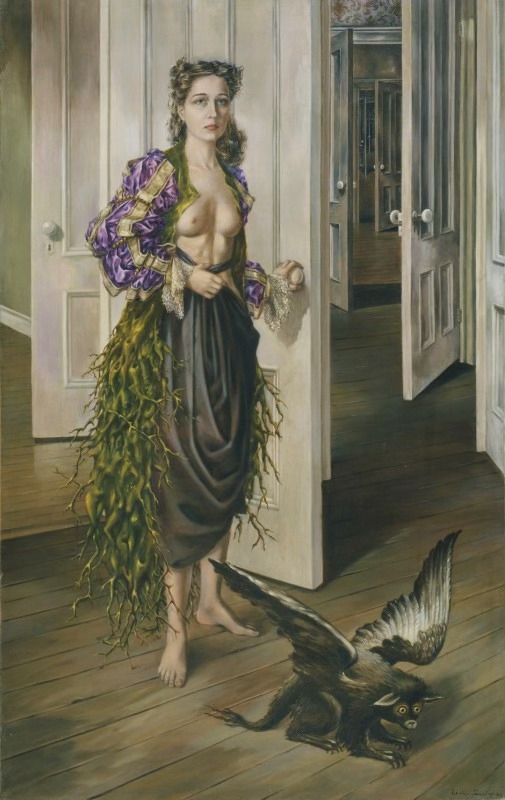
childless cat lady painting by Dorothea Tanning.
* * * * *
A piece in the New Yorker fact-checks anti-divorce dude JD Vance's Hillbilly Elegy (and finds out his grandmother filed for divorce in the 1950s and his grandfather did so in 1981; the couple ended up legally separated) but the really important takeaway for me was: "As no-fault divorce became the norm in state after state, domestic-violence rates dropped by some thirty per cent, suicides among women dropped by as much as sixteen per cent, and the number of women murdered by their partners dropped by ten per cent."
In other words, feminism saves lives (including men's; a significant portion of women's spousal homicide is self-defense). Providing better recourse/escape routes benefits everyone, as does delegitimizing domestic violence, recognizing coercive control, and establishing that men and women are equal under the law and in every other way--in other words, that he has no right to do it.
It's feminism that did a lot of the work to bring us no-fault divorce. Here's a 1992 profile of one such woman:
"In her nearly 32 years as a professor at the University of California at Berkeley's School of Law (Boalt Hall), she has cajoled, wheedled, lobbied and persuaded in her mission to use the law to end sex-based discrimination, by reputation combining clear-eyed logic and flawless legal research with impeccable manners.
"How to make trouble without being a troublemaker, that describes my style," Ms. Kay said in an interview this week. "I think that if you are going to help build an institution, you have to be careful not to destroy it in the process."
"Now, long after many people say they expected her to get the job, Ms. Kay, 57 years old, has been named dean of Boalt Hall, the first woman to hold the position. For the female lawyers and law professors who were her students or who know her through her book and other writings on sex discrimination, Professor Kay is a "patron saint" and "godmother," and her appointment is a sweet victory.
"Over the years, Ms. Kay has become a leading scholar in family law and was an author of no-fault divorce legislation that has been adopted in California and other states. She has been a major force in bringing women into law schools and sending them out on graduation to use law to achieve social change.
"After graduating magna cum laude and Phi Beta Kappa from Southern Methodist University, Ms. Kay entered the University of Chicago Law School. She graduated in 1959, one of three women in a class of 109 students."
Which is also a reminder of how profoundly feminism remade the law and how much Vance and the Republican Party preach regression to almost every form of inequality.
But we still need more feminism because as a recent editorial in the Washington Post states: "One U.S. study found women are twice as likely as men to be convicted of a crime after claiming self-defense; the odds are even worse for a woman of color."
Likewise, restraining orders are a weak tool often not enforced against homicidal spouses intent on punishing women for leaving. Spouses who've often committed earlier violence that went unpunished. Feminism's work continues.
[Rebecca Solnit]
9 notes
·
View notes
Text

Bob Newhart
US standup and sitcom star who exuded calm assurance in a career that spanned more than 50 years
Bob Newhart, who has died aged 94, employed a deadpan delivery, marked with a sometimes stammering hesitation, that made him an unlikely candidate to become one of America’s most successful comedians. It was in keeping with his character that his successes often went overlooked.
Newhart burst on to the scene with the 1960 release of The Button-Down Mind of Bob Newhart, a recording of his first-ever standup performance just months earlier. It shot to No 1 on record charts, followed six months later by The Button-Down Mind Strikes Back!, which rose to No 2, behind its predecessor. His debut won the 1961 Grammy as album of the year, the sequel won best spoken comedy album, and Newhart was named best new recording artist.
Newhart’s preferred format was the one-sided telephone conversation, where the audience’s understanding of what the speaker cannot see makes Newhart his own straight-man. Abraham Lincoln’s PR man in Washington tries to stop him from changing the Gettysburg Address (“You changed four score and seven to 87? Abe, that’s a grabber!”). An official of the West India Company listens to Walter Raleigh singing the praises of the 80 tonnes of leaves he’s shipping to London (“Then what do you do, Walt? You set fire to it! You inhale the smoke, huh! You know, Walt … it seems you can stand in front of your fireplace and have the same thing going for you!”).
In 1961, Newhart made his debut at Carnegie Hall in New York, appeared in Don Siegel’s war film Hell Is for Heroes (doing a variation of his routine on a walkie-talkie) and starred in his first TV series, The Bob Newhart Show, a variety and comedy sketch show following Perry Como’s Kraft Music Hall on NBC. Though it lasted only one season, it won an Emmy and a Peabody award.
youtube
The key to Newhart’s immediate success was suggested by his “button-down” persona. This was the beginning of President John Kennedy’s “new frontier”, where what the British fashion critic John Taylor demeaned as the “simulated negligence” of the unpadded grey flannel suit signified a certain comfort and style, as well as sober conformity. Newhart’s probing of the accepted everyday was entertaining but sharp; a form of subtle satire.
It was a casual approach that he had refined carefully. Born George Robert in the Chicago suburb of Oak Park, Newhart grew up called “Bob” to distinguish him from his father, George David, who was part-owner of a plumbing and heating business. His mother, Pauline (nee Burns), was a housewife. He attended Catholic schools, and graduated from Loyola University in Chicago with a degree in business management in 1952. After two years in the army working as a clerk, he entered the law school at Loyola, but soon left and began working as an accountant.
In one job, he and a colleague, Ed Gallagher, began recording dialogues in the style of Bob and Ray, an innovative comedy duo. Gallagher left for New York, and Newhart moved to writing ad copy for a Chicago production company, while circulating his own tapes.
Local radio personality Dan Sorkin played some, and Newhart began appearing on local morning TV. Tapes reached the record producer George Avakian, who in 1958 had left Columbia Records to form an equivalent company for Warner Brothers. Avakian wanted to catch Newhart’s standup act immediately; the February 1960 show at the Tidelands Club in Houston – which became his first record – was at the first venue that Newhart’s quickly acquired agent could find to book.
After the success of The Bob Newhart Show, he was immediately busy on the standup circuit. His intelligence and easy-going demeanour made him a popular guest on other talkshows, and eventually he was a regular replacement for Johnny Carson on Tonight. Although he was accused by the comic Shelley Berman of plagiarising the telephone gimmick from him, it had already been a longstanding format used by performers including George Jessel and Arlene Harris. It was his demeanour, knowing but hesitant (which he sometimes said was influenced by George Gobel), that made him such a versatile performer.
youtube
The comic Buddy Hackett introduced Newhart to Ginnie (Virginia) Quinn, the daughter of the character actor Bill Quinn. They married in 1963, and the enduring alliance became a running joke when he appeared with the thrice-wed Carson.
Newhart’s film roles were infrequent but often telling: as Major Major in Mike Nichols’ adaptation of Joseph Heller’s Catch-22 (1970); as Gene Wilder’s pal in the Odd Couple-like TV movie Thursday’s Game (1974); and as Papa Elf alongside Will Ferrell in Elf (2003). He also did voices, notably the rescue mouse Bernard in The Rescuers (1977) and its sequel, The Rescuers Down Under (1990).
Unusually, he starred in two long-running TV series. In The Bob Newhart Show (1972-78) he played a psychologist: the perfect manifestation of his standup routine’s listening and commenting. It grew from an appearance on The Smothers Brothers Comedy Hour, and was produced by Mary Tyler Moore and Grant Tinker’s MTM Productions. With Suzanne Pleshette as his schoolteacher wife and Peter Bonerz as the dentist with whom he shares an office, the show was an immediate hit. As ratings dropped and Newhart tired of it, he at one point refused a script that introduced children. “It’s very funny,” he told the producers. “Who’s going to play Bob?”
He returned in 1982 with Newhart, playing Dick Loudon, a writer who moves with his wife (Mary Frann) to a rural Vermont inn. With a cast including Tom Poston, who would win three Emmy nominations as the eccentric handyman George, Newhart became the centre of a world whose chaos stretched the kind of calm understanding for which he was known.
In 1985, Newhart was diagnosed with a blood disease, polycythemia, caused by smoking. Having made comedy from tobacco and appeared, with Poston, in Norman Lear’s comedy Cold Turkey (1971), where a town tries to win $25m from a tobacco company by quitting smoking for a month, he now quit himself.
As Newhart drew to a close after eight seasons, a classic final episode, which played off the famous “who shot JR?” finale of Dallas. It was kept top secret by the cast and crew. Struck by a golf ball, Newhart wakes up in the Bob Newhart Show bedroom, next to Pleshette, complaining of a crazy dream he’s had about Vermont.
Two more series were less successful. Bob (1992-93) saw him as a cartoonist trying to adjust to a corporate world when a character he created is revived. George and Leo (1997-98) was another Odd Couple-type scenario, in which his bookstore owner shares a flat with his son’s father-in-law (Judd Hirsch), who’s running from the mob. Newhart joked about the title: “We had used every variation of my name; all that was left was ‘The’.”
Newhart’s three-part guest appearance on ER in 2003, where Sherry Stringfield’s Dr Lewis helps Newhart’s suicidal Ben Hollander adjust to his oncoming blindness, earned him his fifth Emmy nomination. He was nominated again in 2009 for a supporting role in The Librarian, but finally won in 2013, playing Arthur Jeffries in the comedy The Big Bang Theory. Jeffries was Professor Proton, host of the science TV series (based on Watch Mr Wizard) watched by the genius Sheldon. He was nominated twice more, and reprised the role three times in Young Sheldon.
Newhart’s lifelong comedic chalk-and-cheese friendship with Don Rickles was the subject of Bob and Don: A Love Story, a short documentary made in 2022 by Judd Apatow.
Ginny died in 2023, and Newhart is survived by his sons, Robert and Timothy, and daughters, Courtney and Jennifer.
🔔 Bob (George Robert) Newhart, comedian and actor, born 5 September 1929; died 18 July 2024
Daily inspiration. Discover more photos at Just for Books…?
11 notes
·
View notes
Note
Hiiii I'd LOVE to know more about verity and Aislinn 👁️👄👁️ any tidbits or fun facts or just why you decided to pair them specifically, I love them
Hi! 😁 Ah, Aislinn and my vampire OC Verity!

I just took my mc I use in LOA, hc them as nonbinary and imagined them as a vampire. I wondered how a vampire could navigate NYC and a law firm. I also imagined how Aislinn would react to finding out that they're a vampire. Asked @sazanes to do a commission of them and voila...the hc was born!
Despite the fact that Verity looks like a Blood bound vampire, I'm not 100% sure my version of this LOA and vampire Verity coexist with the BB universe. As much as I love Lily and Kamilah, I really didn't want to have to deal with the Vampire Clans and all their territories and strict rules with this AU so I just say this hc isn't part of the BB universe. (Also the reason why Verity can live in NYC which has an average of 234 days of some sunshine, is because they have a bracelet that gives them partial immunity to the sun. They're able to walk around in the sun without burning but it does make them weak and it isn't comfortable for them.)
Verity Wright's Past:
Verity is actually a very young vampire, a baby vamp, most older vampires would call them. They're less than 100 years old, in fact, Verity is in their early 70s, born in the 1950s. Aislinn teasingly calls them her "boomer," or "boomer baby."
Verity's birth mother was a young teen who gave birth to Verity and left them at a Chicago Illinois hospital. A kind nurse named Gena Wright adopts the baby Verity even though she's a vampire.
Verity grew up in a happy home and even went to law school. But in 1985, at age 31 they were beaten and left to die by gang members they were trying to bring to justice. Thankfully Gena found them and not wanting to let them go, she turned them.
Verity took becoming a vampire very well. They were aware of the existence of vampires so it wasn't much of shock to them. The hardest part for them was coming to terms with their blood lust and how that put them behind in their career. Gena and Verity moved to a rural area of Montana so Verity could isolate themselves and gradually gain control. Eventually they were able to coexist with humans and go back to law school, and become an associate. This is where Sadie McGraw finds them. (Kinda explains how the MC is so good at being a lawyer lol, Verity is older than Sadie)
Timeline of Aislinn x Verity:
The 2 date for over a year and half before moving in together and 3 years before Verity proposed to Aislinn.
They're the power couple lawyers of NYC, with a staggering amount of wins between the two of them.
Originally Aislinn decided to wait until she hit her 50s before being turned but when she is diagnosed at 46 with pancreatic cancer she asks to be turned. She learns how to control her blood lust very quickly for a fledgling vampire and the two reinvent their lives as lawyers and sometimes law professors throughout the centuries.
If you got anymore questions, please feel free to ask! I love getting asks about my headcanons. Hope you have a great day! 😁
#I need to make a vampire Aislinn edit#She'd look so good as a vamp#choices#pixelberry#playchoices#LOA#Laws of Attraction choices#aislinn tanaka#Aislinn#Aislinn x oc#Aislinn x vamp Verity#Vamp hc
13 notes
·
View notes